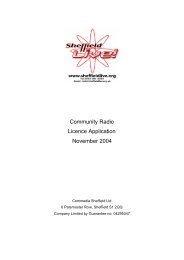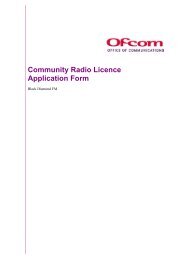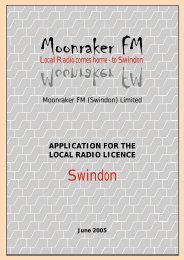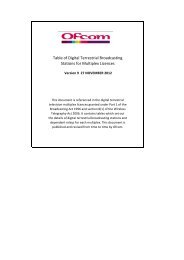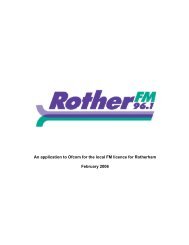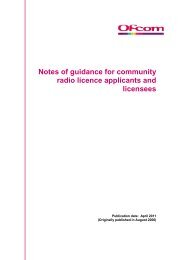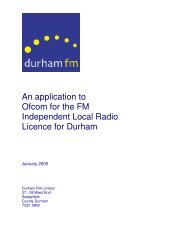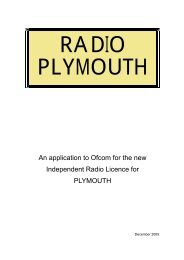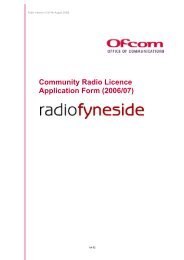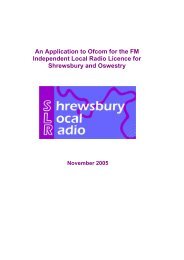UHF2 realignment study - Ofcom Licensing
UHF2 realignment study - Ofcom Licensing
UHF2 realignment study - Ofcom Licensing
Create successful ePaper yourself
Turn your PDF publications into a flip-book with our unique Google optimized e-Paper software.
8.5.1 Option 1 – Full Alignment<br />
Details on the assumptions used for Full Alignment are in Appendix H. The estimates of the<br />
costs are based on the PA Consulting report with the benefits calculated taking into account<br />
the following areas:<br />
240689 - 450-470 Study Final Print<br />
Version (Dec08).doc<br />
Reduced continental interference reduces network costs and/or reduces<br />
cellular costs used at the edge of the network;<br />
Spectrum yield benefits calculated to be 2-3MHz (we take a mid-point of<br />
equivalent AIP values and our own assessment of spectrum value of<br />
equivalent spectrum at recent auctions);<br />
Reductions in handset costs due to economies of scale;<br />
Introduction of digital technologies such as TETRA equipment that requires a<br />
10MHz duplex split;<br />
The <strong>UHF2</strong> band in the UK will be in the same configuration as Europe in line<br />
with the ERC Recommendation TR25-08;<br />
Reduced interference impact on the network due to a 7dB reduction in<br />
interference from the Continent.<br />
Table 20 below summarises the net benefits for full alignment.<br />
Managed Band<br />
Alignment<br />
Table 20 Summary on Full alignment Net Benefits<br />
Costs NPV Benefits NPV Net<br />
Benefits<br />
NPV<br />
£286m £77.7m (reduced interference and<br />
handset prices)<br />
+ £19.5m (spectrum value)<br />
Page 90<br />
-£189m<br />
8.5.2 Options 2 and 3 – Partial Alignment, with different uses for the spectrum yield<br />
(narrowband versus wideband)<br />
For the partial alignment options, we have chosen two scenarios; for narrowband services<br />
and the other for wideband services. In both cases partial alignment on a mainland UK<br />
basis 47 is only considered as the interference of aligned and unaligned within the borders of<br />
the UK would prove to be inefficient.<br />
The benefits are similar to the benefits that occur for Full band alignment, but the size of the<br />
benefit is proportional to the number of base stations impacted for each of the band<br />
47 Excludes Channel Islands and Northern Ireland<br />
abc





